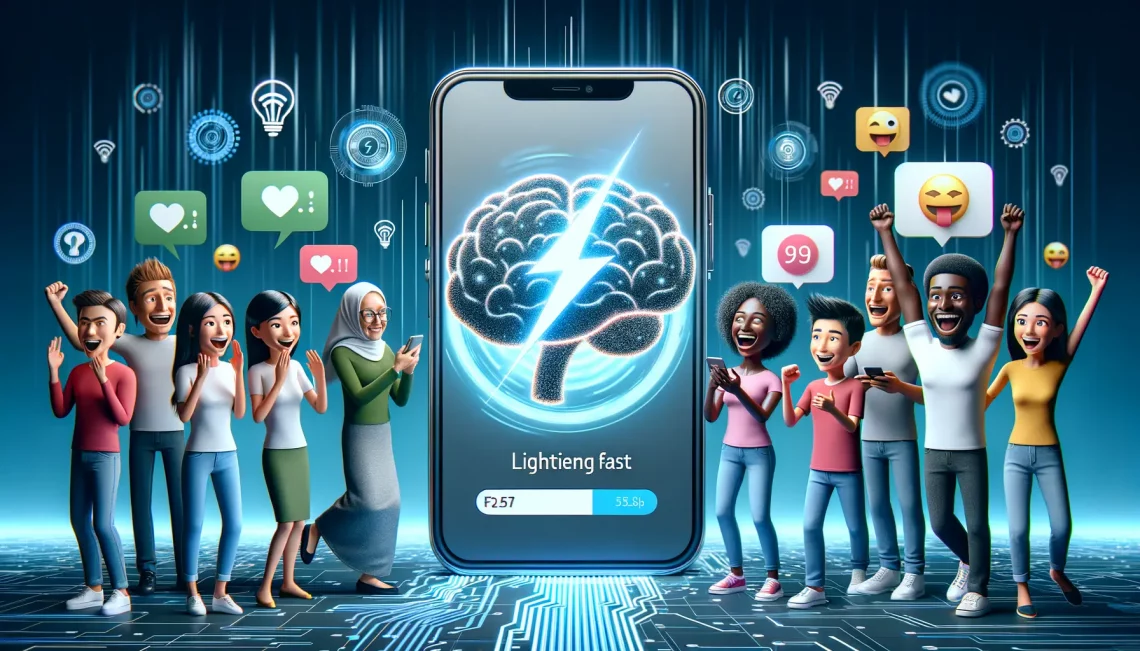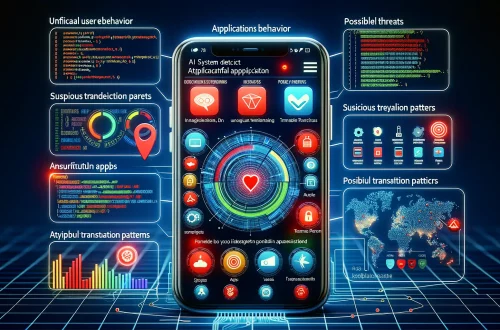Understanding the Role of AI in Mobile App Performance
How AI Becomes the Brain Behind Mobile App Smoothness
Imagine your mobile app as a high-speed train. Every delay, every stutter, is like a sudden stop—it frustrates passengers and makes them consider switching rides. Now, picture *artificial intelligence* as the conductor of that train, ensuring it moves effortlessly along the tracks without delays. That’s exactly the role AI plays in mobile app performance. It’s not just a luxury; it’s the secret sauce behind seamless user experiences.
Here’s what makes AI such a game changer:
- Predictive Analysis: AI predicts potential bottlenecks in load times before they even happen, much like weather forecasts help you prepare for a storm.
- Real-Time Adjustments: Think of it as a mechanic constantly fine-tuning the engine while the train is running. AI dynamically optimizes resources on the go.
- User Behavior Insights: By understanding how users tap, swipe, and interact, AI can tailor performance to fit their exact needs.
But it doesn’t stop at monitoring performance. AI algorithms, like diligent detectives, uncover hidden inefficiencies—those rogue lines of code or oversized images that drag down your app’s speed. It’s like having a guardian angel for your app, tirelessly working behind the scenes.
Benefits of Optimizing App Load Times with AI

Why Faster Apps Make a Difference
Imagine this: You’re eagerly opening your favorite app to check something important, but instead, you’re left staring at a loading wheel that drags on. Frustrating, right? Well, here’s where the magic of AI steps in. Optimizing load times with AI-driven solutions doesn’t just shave off milliseconds—it transforms user experiences into seamless, lightning-fast interactions that keep your audience coming back for more.
When apps load faster, users are more likely to engage, stay longer, and even make those crucial purchases or complete actions you care about. It’s the virtual equivalent of rolling out the red carpet versus making your guests wait at the door.
- Decrease abandonment rates: People won’t quit waiting if your app opens in a heartbeat.
- Boost retention: Snappy apps build trust and loyalty over time.
- Drive revenue: Faster load times directly link to higher conversions and sales.
AI Is Your Superpower
What makes AI such a game-changer here? Unlike typical manual optimizations, AI works dynamically—it learns and adapts in real time. Think of it as your 24/7 performance coach, spotting bottlenecks, predicting slowdowns, and ensuring your app stays in its prime condition. For instance, brands like Netflix have mastered predictive caching with AI, making sure the next episode is ready before you even think of hitting “play.”
AI Techniques for Optimizing Load Times

Smart Algorithms That Trim the Fat
When it comes to shaving precious seconds off mobile app load times, AI is like your very own backstage wizard. Imagine an app trying to juggle millions of requests—it’s chaos! But with AI-based data compression, your app learns to “travel light.” AI identifies bulky assets (think high-res images or bloated code) and compresses them efficiently without compromising quality. This clever trick ensures your app still looks gorgeous while loading faster than ever.
Another ace up AI’s sleeve? Predictive caching. Picture this: you’re driving home, and the GPS already knows what route you’ll take. That’s predictive caching in a nutshell. AI analyzes user behavior and pre-loads elements it predicts they’ll need, so everything feels instantaneous. Magic? Nope, just machine learning!
The Art of Prioritization
AI doesn’t just load your app; it choreographs it. Through advanced techniques like lazy loading, AI ensures essential app elements appear first, instead of overwhelming the user with everything at once. Result? A seamless, frustration-free experience.
Still wondering where to start? Begin with these techniques:
- Use AI to break down large scripts into digestible chunks.
- Leverage neural networks for real-time performance monitoring.
Your app will feel lighter, faster, and ready to win hearts (and downloads!).
Steps to Implement AI in Your Mobile App Optimization Process

Start with Clear Goals and a Strategic Plan
Implementing AI in your app optimization process isn’t just flipping a switch—it’s more like building a custom engine for a high-performance car. First, define what success looks like for your load times. Do you want to reduce them by 30%? Aim for under 2 seconds? Write these goals down, because they’ll guide everything you do.
Next, audit your app’s current performance. Dive into analytics to uncover where load time bottlenecks are happening. Is it the image-heavy homepage? A lagging API call? Pinpoint these pain points so your AI implementation has a laser focus.
Craft a roadmap: which updates will be quick wins? Which might require a more complex AI model? Break your plan into digestible steps—trust me, chaos won’t help anyone.
Integrate AI Without Overwhelming Your Workflow
AI tools work wonders, but only if they’re part of a cohesive system. Choose a tool that aligns with your tech stack and team skills. For example:
- Automated compression: Use AI to resize images dynamically without sacrificing quality—bye-bye endless manual resizing!
- Predictive caching: Implement algorithms that anticipate what users need on their next click. Preloading key resources can slash load times.
Test early, test often. Once AI is running, monitor its impact. Did those milliseconds melt away? If not, tweak until every second serves your user experience.
Best Practices and Tools for AI-Powered Load Time Optimization

Smart Strategies for Turbocharging Load Times
Picture this: your app is a racecar speeding toward your users. Every second shaved off your load time is like nitro fuel, getting them to the finish line faster and happier. But how do you perfect your timing? Here’s your roadmap with cutting-edge AI techniques.
First, embrace the magic of predictive analytics. AI can analyze past user behavior to anticipate what they’ll need next. Imagine preloading parts of your app that users are likely to tap on—kind of like laying out your tools before starting a DIY project.
Then there’s AI-powered caching. Tools like Cloudflare or Fastly use algorithms to keep frequently accessed data ready to go, so your app doesn’t spend precious milliseconds hunting for it.
- Compress assets dynamically: AI tools like TinyPNG or Kraken.io can reduce image sizes without compromising quality.
- Optimize API calls: Use AI-driven tools like Apimatic to simplify and streamline communication between your app and servers.
The best part? All of this optimization happens in the background, like an orchestra tuning itself while you’re enjoying the symphony. Your users won’t know it’s there—but they’ll definitely feel the difference.
Tools You Need in Your AI Arsenal
You’ve got the strategies—now you need the right weapons for the battle against slow load times. Start with Google’s Firebase Performance Monitoring, an all-in-one solution to pinpoint bottlenecks.
For more advanced needs, explore Dynatrace, which uses AI to analyze your entire app ecosystem and suggest improvements. It’s like having a coach whispering game-winning tactics in your ear.
And don’t forget AWS Machine Learning. While often used for large-scale AI tasks, it offers services like personalized asset delivery that can speed up your app’s load times with impressive precision.
With these tools at your disposal, you’re not just optimizing—you’re transforming your app into a seamless experience that feels like magic to your users.






